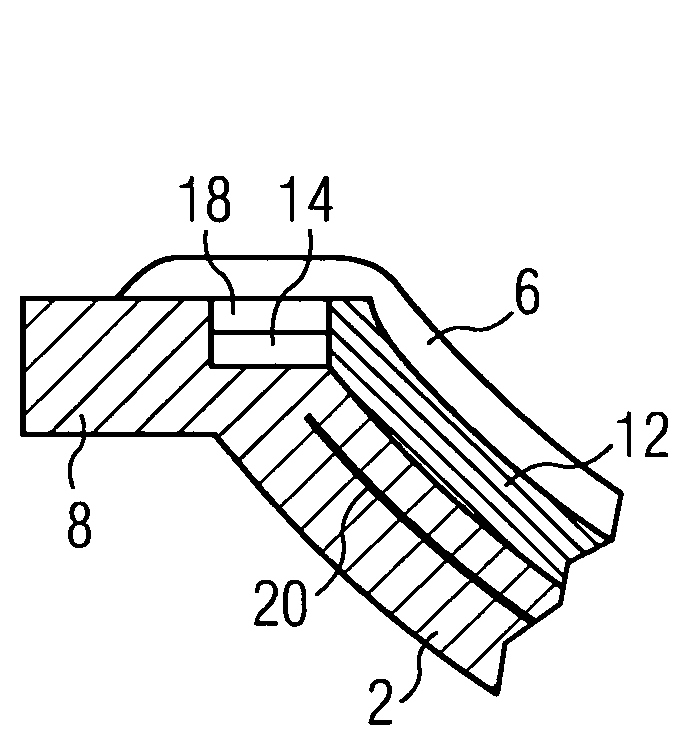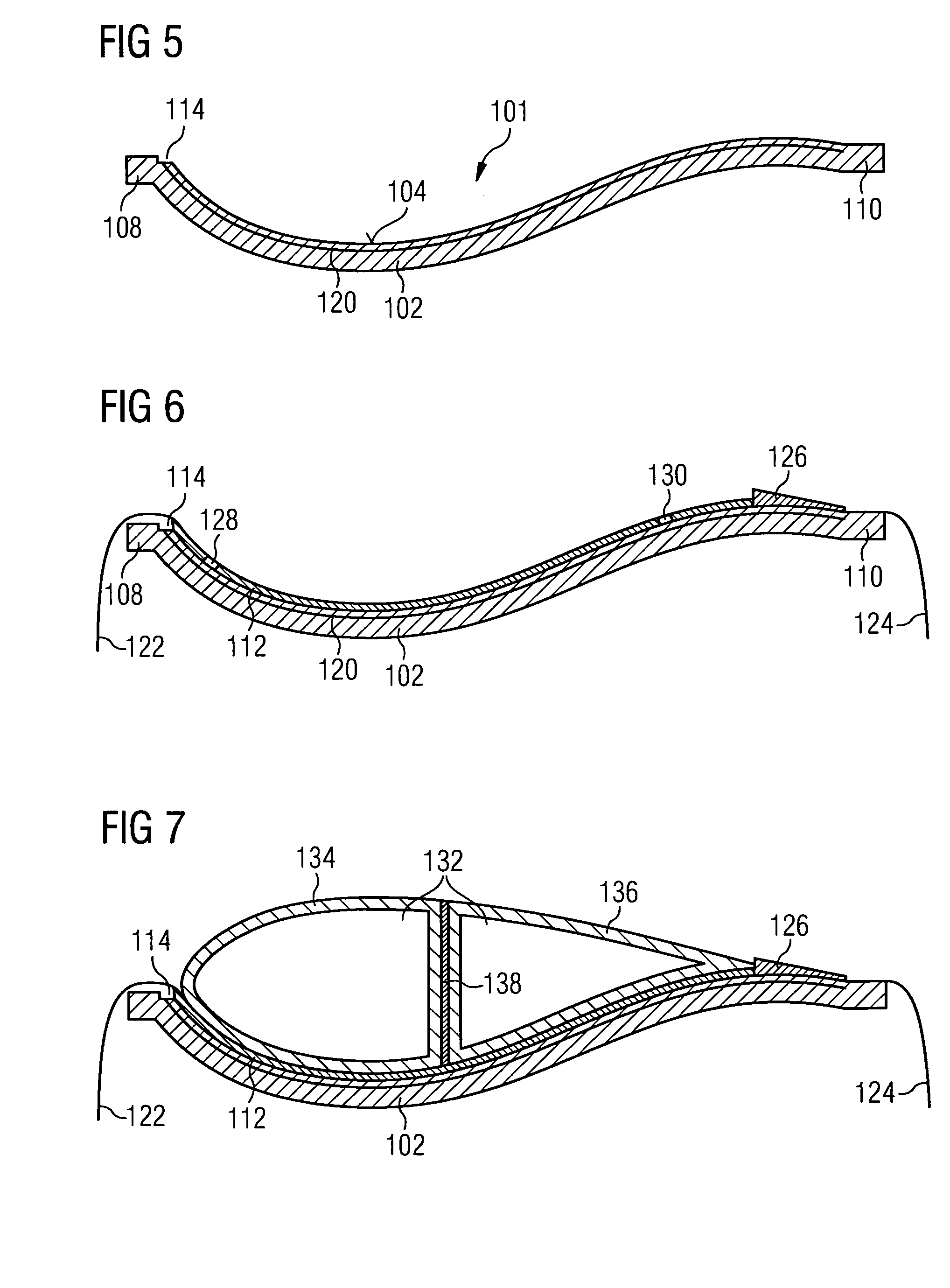Mould and method for vacuum assisted resin transfer moulding
a technology of vacuum assisted resin and transfer moulding, which is applied in the direction of drawing profiling tools, machines/engines, and final product manufacture, etc., can solve the problem of adding weight without providing a substantial structural benefi
- Summary
- Abstract
- Description
- Claims
- Application Information
AI Technical Summary
Benefits of technology
Problems solved by technology
Method used
Image
Examples
first embodiment
[0025]the inventive mould is shown in FIG. 1. The figure shows a mould for a shell part of a fibre reinforced laminate wind turbine rotor blade. The shell part to be formed by the mould forms the pressure side of the later rotor blade, i.e. the side which shows substantially towards the direction from which the wind comes during operation of the wind turbine. A similar mould (not shown) will be used for forming the suction side shell part. The wind turbine rotor blade is then formed by joining the pressure side shell and the suction side shell by glue joints.
[0026]The mould 1 shown in FIG. 1 comprises a first mould part 2 which is made from a rigid and structurally stable material. The mould part 2 comprises an inner surface 4 which defines a negative impression of the wind turbine rotor blade's pressure side shell part. The surface 4 of the mould part 2 may be provided with a suitable release agent which allows for removing the pressure side shell part from the mould after the moul...
third embodiment
[0036]the inventive mould and its use will be described with respect to FIGS. 5 to 9.
[0037]FIG. 5 shows a first mould part of the mould 101 according to the third embodiment which corresponds to the first mould parts of the first and second embodiments except for the fact that no recess 16 is present in the mould part's edge 110 that is located where the wind turbine rotor blade's trailing edge will be formed. The remaining parts of the first mould part 102 of the third embodiment correspond to the respective parts of the mould part 2 of the first and second embodiments and will therefore not be described again. Elements of the mould part 102 which correspond to the mould part 2 are designated with the reference numerals which are increased by 100 with respect to those used for the mould part 2.
[0038]A layer stack 112 is formed in the first mould part 102 (see FIG. 6) by first putting one or more layers of fibre reinforcement material in the mould, then putting a core material atop ...
PUM
| Property | Measurement | Unit |
|---|---|---|
| structurally stable | aaaaa | aaaaa |
| outer dimensions | aaaaa | aaaaa |
| dimensions | aaaaa | aaaaa |
Abstract
Description
Claims
Application Information
 Login to View More
Login to View More - R&D
- Intellectual Property
- Life Sciences
- Materials
- Tech Scout
- Unparalleled Data Quality
- Higher Quality Content
- 60% Fewer Hallucinations
Browse by: Latest US Patents, China's latest patents, Technical Efficacy Thesaurus, Application Domain, Technology Topic, Popular Technical Reports.
© 2025 PatSnap. All rights reserved.Legal|Privacy policy|Modern Slavery Act Transparency Statement|Sitemap|About US| Contact US: help@patsnap.com



